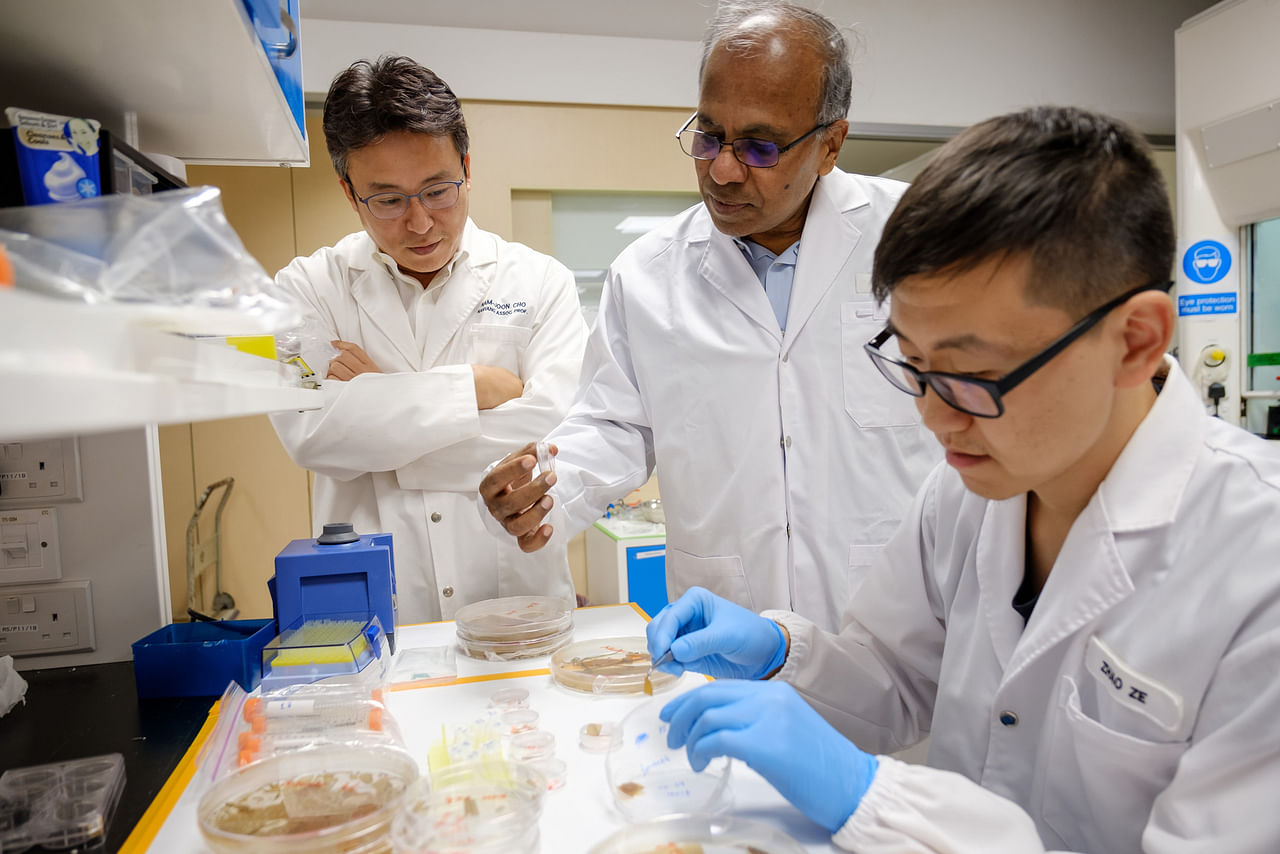SINGAPORE - A new light brown paper made of sunflower pollen can automatically fold itself into a food container or straw when exposed to moisture in the air, breaking the mould for single-use packaging.
The intelligent pollen paper - created by scientists from Nanyang Technological University (NTU) - is created by adding potassium hydroxide to sunflower pollen grains.
After 24 hours, the pollen transforms into a gel that is moulded onto a petri dish, for example, and left to dry overnight. The dried pollen paper is then peeled from the mould.
The pollen paper can vary in thickness from 20 to 200 micrometres, similar to that of a strand of hair - but it is far from fragile.
In fact, pollen is known as the diamond of the plant kingdom as it is one of nature's most durable materials, said the research team's co-lead, Professor Cho Nam-Joon from NTU's School of Materials Science and Engineering.
Prof Cho's research includes turning pollen into plastic and metal alternatives.
The pollen paper can be made thicker or layered if it were to be folded into a container or straw. It can be used as a greener alternative to materials such as plastics and styrofoam for disposable products and packaging.
Pollen is also abundant and can be degraded in nature gradually.
"If we make the paper thicker, its properties will be more plastic-like. The original raw material itself is very strong. So, by modifying that, it can be stronger," said Prof Cho.
The pollen paper comes to life when it is exposed to humidity, and after some toner - a powder that works like printer ink - prints lines and patterns on the brown paper. Toner acts as the ink in office and home laser printers.
To apply toner on the pollen paper, it goes through an ordinary printer, just like writing paper.
The pollen paper is then exposed to different humidity levels in a controlled environment.
While the pollen paper is sensitive to moisture in the air and curls up, the inked parts do not respond to water. These opposing behaviours cause the flat paper to morph into three-dimensional shapes as humidity drops.
How the paper folds or twists depends on the printed pattern.
For example, a piece of pollen paper cut into an outline of a box would automatically fold into a box when the folded hinges are printed with barcode-like vertical lines.
A strip of paper printed with diagonal lines would curl into a straw.

Prof Cho said: "Products can be produced without manual folding, reducing the skill and time necessary for fabrication. The whole process is also eco-friendly and scalable."
Coating the morphed paper with petroleum jelly or chitosan - a natural sugar found in the shells of crabs and shellfish - will prevent the product from unravelling due to humidity changes, and lock it in shape.
NTU president Subra Suresh, who co-led the research, said: "We combined easy-to-process pollen grains and cost-effective digital printing to develop a moisture-sensitive (material) that can morph on demand into... complex shapes depending on the patterns we print."

Prof Cho said this is the first time pollen is used to develop self-folding materials. The research team's method was published in the scientific journal Proceedings Of The National Academy of Sciences of the United States of America last month.
Packaging waste, including plastics, makes up about one-third of domestic waste in Singapore. Last year, about 200,000 tonnes of disposables - including carrier bags and takeaway containers - were thrown away here.
The NTU team is now working on optimising its pollen paper and method so that companies can eventually use the technology to manufacture greener products, including humidity sensors.



